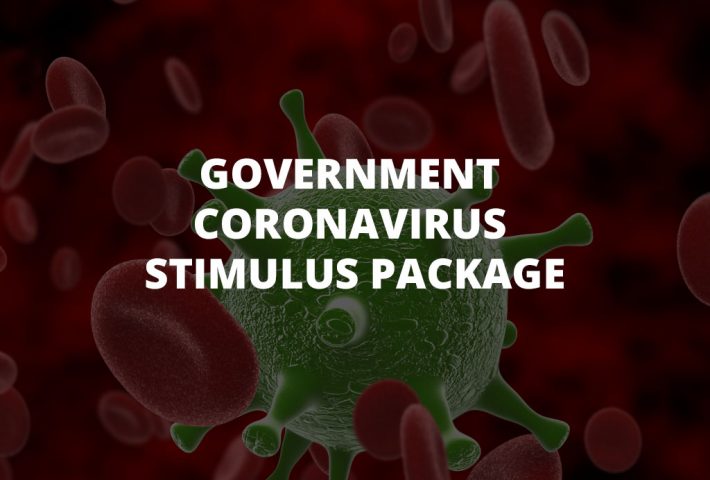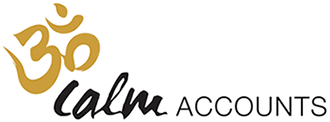
While the full economic effects from the virus remain uncertain, the outlook has deteriorated since the Government’s initial Economic Response of $17.6 billion of stimulus measures were announced on 12 March 2020.
The spread of the virus worldwide has since broadened, and is expected to be more prolonged. Governments, both international and domestic, have announced stricter mitigation measures to slow the spread of the virus, which are having significant economic impacts.
On 30 March, the Australian Federal Government announced the $130 billion JobKeeper Payment to help keep Australians in jobs as we deal with the significant economic impact from the Coronavirus. This brings the Government’s total support for the economy to $320 billion across the forward estimates, representing 16.4 per cent of annual GDP.
The Australian Government is providing financial assistance to Australians to support them through the Coronavirus. This assistance includes cash flow support to businesses and temporary measures to provide relief for financially distressed businesses, income support payments, payments to support households and temporary early releases of superannuation.
- JobKeeper payment
- Income support for individuals
- Payments to support households
- Temporary early release of superannuation
- Temporarily reducing superannuation minimum drawdown rates
- Reducing social security deeming rates
- Boosting cash flow for employers
- Temporary relief for financially distressed businesses
- Increasing the instant asset write-off
- Backing business investment
- Supporting apprentices and trainees
JobKeeper payment
If your business has been significantly impacted by the Coronavirus you will be able to access a wages subsidy to continue paying your employees. Under the JobKeeper program, you will be able to claim a fortnightly payment of $1,500 per eligible employee from 30 March 2020, for a maximum of six months. This assistance will help you keep staff and will help you restart when the crisis is over.
Boosting cash flow for employers
The Government is enhancing the Boosting Cash Flow for Employers measure it announced on 12 March 2020. The Government is providing up to $100,000 to eligible small and medium-sized businesses, and not for-profits (NFPs) that employ people, with a minimum payment of $20,000. These payments will help businesses and NFPs with their cash flow so they can keep operating, pay their rent, electricity and other bills and retain staff.
This measure will benefit around 690,000 businesses employing around 7.8 million people, and around 30,000 NFPs (including charities).
Small and medium-sized business entities with aggregated annual turnover under $50 million and that employ workers are eligible. NFPs, including charities, with aggregated annual turnover under $50 million and that employ workers will now also be eligible. This will support employment at a time where NFPs are facing increasing demand for services.
Under the enhanced scheme, employers will receive a payment equal to 100 per cent of their salary and wages withheld (up from 50 per cent), with the maximum payment being increased from $25,000 to $50,000. In addition, the minimum payment is being increased from $2,000 to $10,000.
An additional payment is also being introduced in the July – October 2020 period. Eligible entities will receive an additional payment equal to the total of all of the Boosting Cash Flow for Employers payments they have received. This means that eligible entities will receive at least $20,000 up to a total of $100,000 under both payments.
Temporary relief for financially distressed businesses
The economic impacts of the Coronavirus and health measures to prevent its spread could see many otherwise profitable and viable businesses temporarily face financial distress. It is important that these businesses have a safety net to make sure that when the crisis has passed they can resume normal business operations. One element of that safety net is to lessen the threat of actions that could unnecessarily push them into insolvency and force the winding up of the business.
The Government is temporarily increasing the threshold at which creditors can issue a statutory demand on a company and the time companies have to respond to statutory demands they receive. The package also includes temporary relief for directors from any personal liability for trading while insolvent, and providing temporary flexibility in the Corporations Act 2001 to provide temporary and targeted relief from provisions of the Act to deal with unforeseen events that arise as a result of the Coronavirus health crisis.
The ATO will tailor solutions for owners or directors of business that are currently struggling due to the Coronavirus, including temporary reduction of payments or deferrals, or withholding enforcement actions including Director Penalty Notices and wind-ups.
Increasing the instant asset write-off
The Government is increasing the instant asset write-off threshold from $30,000 to $150,000 and expanding access to include businesses with aggregated annual turnover of less than $500 million (up from $50 million) until 30 June 2020. In 2017-18 there were more than 360,000 businesses that benefited from the current instant asset write-off, claiming deductions to the value of over $4 billion. This measure will support over 3.5 million businesses (over 99 per cent of businesses) employing more than 9.7 million employees.
Backing business investment
The Government is introducing a time limited 15 month investment incentive (through to 30 June 2021) to support business investment and economic growth over the short term, by accelerating depreciation deductions. Businesses with a turnover of less than $500 million will be able to deduct 50 per cent of the cost of an eligible asset on installation, with existing depreciation rules applying to the balance of the asset’s cost. This measure will support business investment and is estimated to lower taxes paid by Australian businesses by $6.7 billion over the next two years. This measure will support over 3.5 million businesses (over 99 per cent of businesses) employing more than 9.7 million employees.
Supporting apprentices and trainees
The Government is supporting small business to retain their apprentices and trainees. Eligible employers can apply for a wage subsidy of 50 per cent of the apprentice’s or trainee’s wage for 9 months from 1 January 2020 to 30 September 2020. Where a small business is not able to retain an apprentice, the subsidy will be available to a new employer that employs that apprentice. Employers will be reimbursed up to a maximum of $21,000 per eligible apprentice or trainee ($7,000 per quarter).
Support will also be provided to the National Apprentice Employment Network, the peak national body representing Group Training Organisations, to co-ordinate the re-employment of displaced apprentices and trainees throughout their network of host employers across Australia.
This measure will support up to 70,000 small businesses, employing around 117,000 apprentices.
Support for Coronavirus-affected regions and communities
The Government will set aside $1 billion to support regions most significantly affected by the Coronavirus outbreak. These funds will be available to assist during the outbreak and the recovery. In addition, the Government is assisting our airline industry by providing relief from a number of taxes and Government charges estimated to total up to $715 million.
Income support for individuals
Over the next six months, the Government is temporarily expanding eligibility to income support payments and establishing a new, time-limited Coronavirus supplement to be paid at a rate of $550 per fortnight. This will be paid to both existing and new recipients of JobSeeker Payment, Youth Allowance Jobseeker, Parenting Payment, Farm Household Allowance and Special Benefit.
Payments to support households
The Government is providing two separate $750 payments to social security, veteran and other income support recipients and eligible concession card holders. The first payment will be made from 31 March 2020 and the second payment will be made from 13 July 2020. Around half of those that benefit are pensioners. This payment will help to support confidence and domestic demand in the economy. The second payment will not be made to those eligible for the Coronavirus supplement.
Temporary early release of superannuation
The Government is allowing individuals affected by the Coronavirus to access up to $10,000 of their superannuation in 2019-20 and a further $10,000 in 2020-21. Individuals will not need to pay tax on amounts released and the money they withdraw will not affect Centrelink or Veterans’ Affairs payments.
Temporarily reducing superannuation minimum drawdown rates
The Government is temporarily reducing superannuation minimum drawdown requirements for account-based pensions and similar products by 50 per cent for 2019-20 and 2020-21. This measure will benefit retirees holding these products by reducing the need to sell investment assets to fund minimum drawdown requirements.
Reducing social security deeming rates
On 12 March, the Government announced a 0.5 percentage point reduction in both the upper and lower social security deeming rates. The Government will now reduce these rates by another 0.25 percentage points.
As of 1 May 2020, the upper deeming rate will be 2.25 per cent and the lower deeming rate will be 0.25 per cent. The reductions reflect the low interest rate environment and its impact on the income from savings. The change will benefit around 900,000 income support recipients, including around 565,000 Age Pensioners who will, on average receive around $324 more of the Age Pension in the first full year the reduced rates apply.
Information on how the Australian Government’s economic response could support you can be found in the fact sheets available at https://treasury.gov.au/coronavirus/resources



